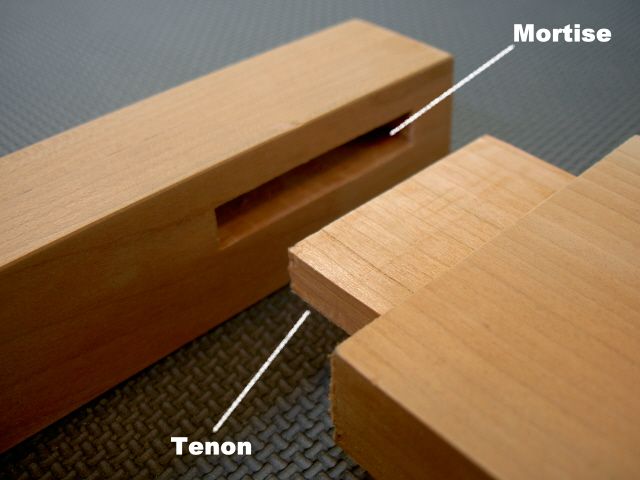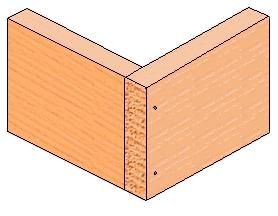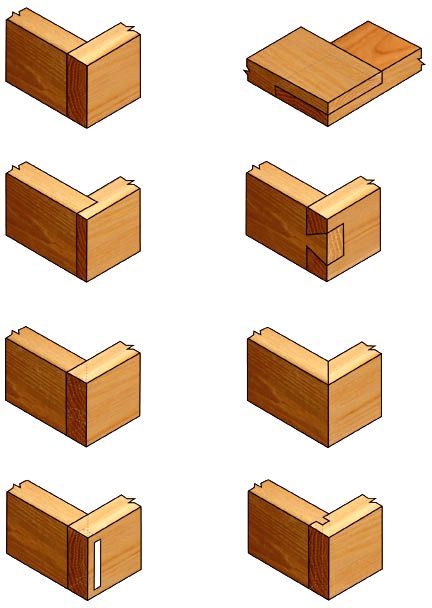Dovetail Joint
Wood Joinery Techniques
Dovetail Joinery:
A Dovetail joint is used to join the ends of two boards at right angels to each other. If you put your hands together with your fingers meshing at the knuckles, you will more or less have a dovetail joint. The dovetail joint is the strongest of all joints used in cabinet-making. Dovetails are often used when it will add to value to the furniture's construction. All dovetails are fully dovetailed ---The fronts are actually dovetailed into the sides, not merely attached to a dovetailed drawer box. The parting rails which separate the drawers from one another at both the front and back of each piece are dovetailed into the sides.
 Mortise and Tenon Joint
Mortise and Tenon Joint
Mortise and Tenon Joinery:The Mortise-and-Tenon is one of the best joints for building furniture because of its superior strength. Its primary function in Craftsman furniture is to join the major frame of each piece (legs to rails, slats to rails, and stretchers to rails). A variety of mortise-and tenon joints exist in furniture, including keyed, doweled, blind, and doweled through. Each variation uses the basic mortise-and-tenon form.
Beveling - Through tenon ends are beveled to prevent splitting and to cut down the visual harshness of the tenon's projection.
Dowels - Many types of joints are strengthened by the insertion of dowels. The dowel strengthens the mortise-and-tenon joint (pegged mortise-and-tenon) and to butt-join larger pieces edge to edge.
In the pegged mortise-and-tenon joint, the dowel passes through both the mortise and the tenon, preventing the tenon from backing out of its mortise. Doweling (pegging) adds strength to stress points in the furniture. On cabinet doors, for example, the vertical and horizontal members fit together with a mortise-and-tenon joinery, the pieces are joined, glued, clamped, and finally a hole is drilled through the joint, and a peg of matching wood is dipped in hot glue and driven securely into the hole.
 Butt Joint
Butt Joint
Butt Joints:The Butt Joint joins two pieces edge-to-edge. This craftsman technique or finger joinery is used depending upon thickness of the piece for tabletops, wide shelves, and sides. With this method, two piece of stock are lined up edge-to-edge, equal size holes are drilled on the sides facing each other, then using the holes to hold as connection points, dowels are inserted to strengthen the bond as the boards are glued together to form the larger surface.
 Most Joinery Styles
Most Joinery Styles